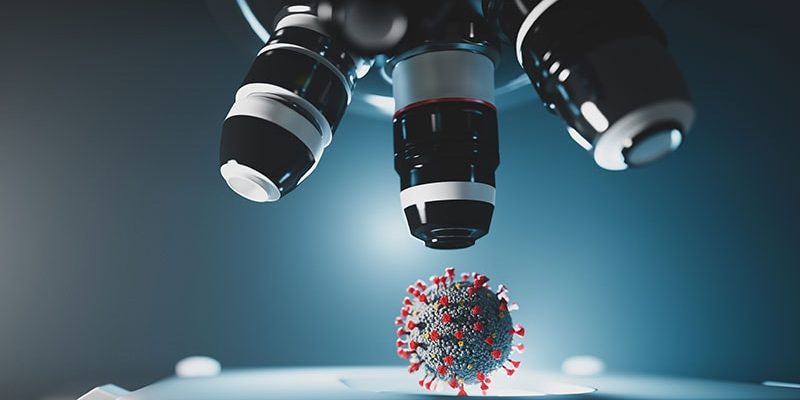On April 15, 2021, as COVID-19 was waning several months prior to the surge in deaths associated with arrival of the Delta variant, the journal Cell published an eye-catching paper.
Titled “Soluble ACE2-mediated cell entry of SARS-CoV-2 via interaction with proteins related to the renin-angiotensin system,” the article stood in stark contrast to the contemporary understanding of the mechanism of SARS-CoV-2 infection, which until then held that ACE2 on the membranes of susceptible cells served as the “receptor” for the virus.
The paper was notable because it claimed that vasopressin, also known as antidiuretic hormone, worsened COVID-19 infections. Vasopressin is known for its ability to promote water retention in the kidneys as well as to constrict blood vessels, but had not previously been associated with COVID-19 infections.
Upon reading the paper, one of us (MB) noted a large number of inaccuracies. The authors had used the wrong reagent: a high molecular weight precursor of vasopressin rather than vasopressin itself. They also incorrectly portrayed ACE2, the V1B vasopressin receptor, and the AT1 angiotensin II receptor – the primary mediators of their hypothetical mechanism of COVID-19 infection. (PubPeer commenters also pointed out problems in the paper, including a failure of the authors to post their original data.)
Vasopressin offers the advantage of minimal pulmonary artery constriction and respiratory stimulation compared to other vasopressors used to maintain blood pressure in patients with COVID-19 who are on ventilators. But it would be a bad idea in COVID-19 patients if it increased the infectivity of SARS CoV-2. Fortunately, a study showed that wasn’t the case.
So, if doctors based their treatment decisions on the Cell paper, they’d be depriving patients of an important regimen. MB sent a list of the inaccuracies in the Cell paper to the editor of the journal. Six weeks later, having received no response, he sent a copy of his correspondence to a group of approximately 30 experts in the field of renin-angiotensin system research, including one of us (RS). Unsurprisingly, his concerns received near unanimous affirmation from the group.
Seven weeks after MB attempted to contact Cell, the editor responded. He suggested that MB contact the authors of the paper to apprise them of their errors. Subsequently the editor forwarded the list of challenges to the authors of the paper. The authors responded to the letter with a total rebuttal, denying any mistakes.
Accepting the rebuttal at face value, the editor wrote that the only challenge he would accept to the paper was a replication of the study that did not support the findings of the original article. Taking up the challenge, two researchers MB had contacted previously about the article agreed to work with him to repeat some of the experiments. Not unexpectedly, their results, which were published in Cell , did not support the original findings.
However, following that paper’s publication, the authors of the original paper published yet another article in Cell defending their study. That despite two other studies that have failed to replicate the Cell study’s claims.
This past May, MB once again requested that the Cell editors attach a correction to the original paper, but they stopped responding. We have now published a letter to the editor in the Medical Research Archives describing just a few of the major concerns we have about the Cell paper, emphasizing its potential to adversely impact the treatment of COVID-19 patients who need ventilatory support.
Some might say that all of this back and forth is how science should work, rather than a correction or retraction. But we would suggest it is better to follow the “If you see something, say something” dictum. Few do, because of fear of retaliation and putting their careers in jeopardy. Failing to correct blatant errors in the literature is, in our opinion, editorial misconduct. This is not a debatable matter. Science cannot maintain society’s trust if it doesn’t police itself.
Given the refusal of the editor of Cell to even implement a correction of the manuscript to notify readers of the erroneous characterization of vasopressin, let alone the other errors, we can only hope that by publicizing these errors in as many venues as possible, we can minimize the harm that this paper could potentially cause to ventilated COVID-19 patients.
Robert Speth is affiliated with the Department of Pharmaceutical Sciences, College of Pharmacy at Nova Southeastern University, in Fort Lauderdale, Fla., and the Department of Pharmacology and Physiology at the School of Medicine, Georgetown University, in Washington, D.C. Michael Bader is with the Max-Delbrück-Center for Molecular Medicine in Berlin, Germany.
Adam Marcus, a cofounder of Retraction Watch, is an editor at Medscape.
Source: Read Full Article
